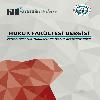ALMANYA'DA ŞEHİRİÇİ YOLLARIN YENİLENMESİNDEN DOĞAN MASRAFLARA KOMŞU MÜLK SAHİPLERİNİN KATILIMI
Şehir içi yol inşaatı her zaman belediyeler için ağır bir yük olmuştur. Bu nedenle, Roma İmparatorluğu zamanında bile, taşınmaz sahipleri kendilerine komşu olan yolların inşa masraflarına katılıyorlardı. Başlangıçta, bu tür yolların inşaatı (ilk inşaat) maliyetleri ön plandaydı. Ancak zamanla, daha sonra gerekli onarım (iyileştirme, yenileme) maliyetlerinin çok daha yüksek olduğu ortaya çıktı. Bunun nedeni, her yolun tüm hizmet ömrü boyunca aşınma ve yıpranmaya maruz kalmasıdır; yaklaşık 30 yıllık bir süre sonra yıpranmış ve daha fazla maliyetli yoğun onarım gerekmektedir. Bu nedenle, ilk olarak 1893'te Prusya federe devleti ve 1945'ten sonra tüm Federal Almanya Cumhuriyeti’nde bir şehir inşaatı yollarının ilk inşaat maliyetlerinin gelişim katkısına ek olarak bir yol inşaatı katkısı başlattı. – Belediyeler eşit muamele amacıyla, bu rehabilitasyondan öncelikli olarak faydalanacak olanlara rehabilitasyon maliyetlerinin ortalama %50'sini paylaştırmak zorunda kalmışlardır. Bunlar, kullanım değeri büyük ölçüde yolun durumuna bağlı olduğu için, yükseltilmiş yola bitişik arazinin sahipleriydiler. Finansal açıdan güçlü mal sahibi derneklerinin baskısı altında, bazı federal devletler yakın zamanda yol inşaatı katkılarını kaldırmış ve bunun sonucunda genel halkın (vergi mükellefi) artık daha önce sahipler tarafından üstlenilen yenileme maliyetlerinin payını ödemesi gerekmiştir.
THE PARTICIPATION OF LANDOWNERS TO THE COSTS OF RENOVATING INNERCITY ROADS IN GERMANY
Inner-city road construction has always been a heavy burden on the municipalities. For this reason, as early as the Roman Empire, the owners of land were already sharing the costs of building those roads that bordered on them. Originally, the costs for the construction (first-time construction) of such roads were in the foreground. But in the course of time it turned out that the costs for later necessary renovations (improvements, renewals) were much higher as a result. This is because every road is subject to wear and tear during its entire service life; after a period of about 30 years, it is worn out and further cost-intensive rehabilitation is required. For this reason, first the state of Prussia in 1893 and then, after 1945, all the states of the Federal Republic of Germany introduced a road construction contribution - in addition to the development contribution for the costs of the first construction of inner-city roads - by which the municipalities were obliged, in the interest of equal treatment, to pass on a share of the rehabilitation costs of an average of 50% to those who would primarily benefit from such rehabilitation. These were and still are the owners of land adjacent to the upgraded road, as its utility value depends largely on the condition of the road. Under pressure from financially strong owners' associations, some federal states have recently abolished road construction contributions with the result that the general public (the taxpayer) is now also required to pay the share of the refurbishment costs previously borne by the owners.
